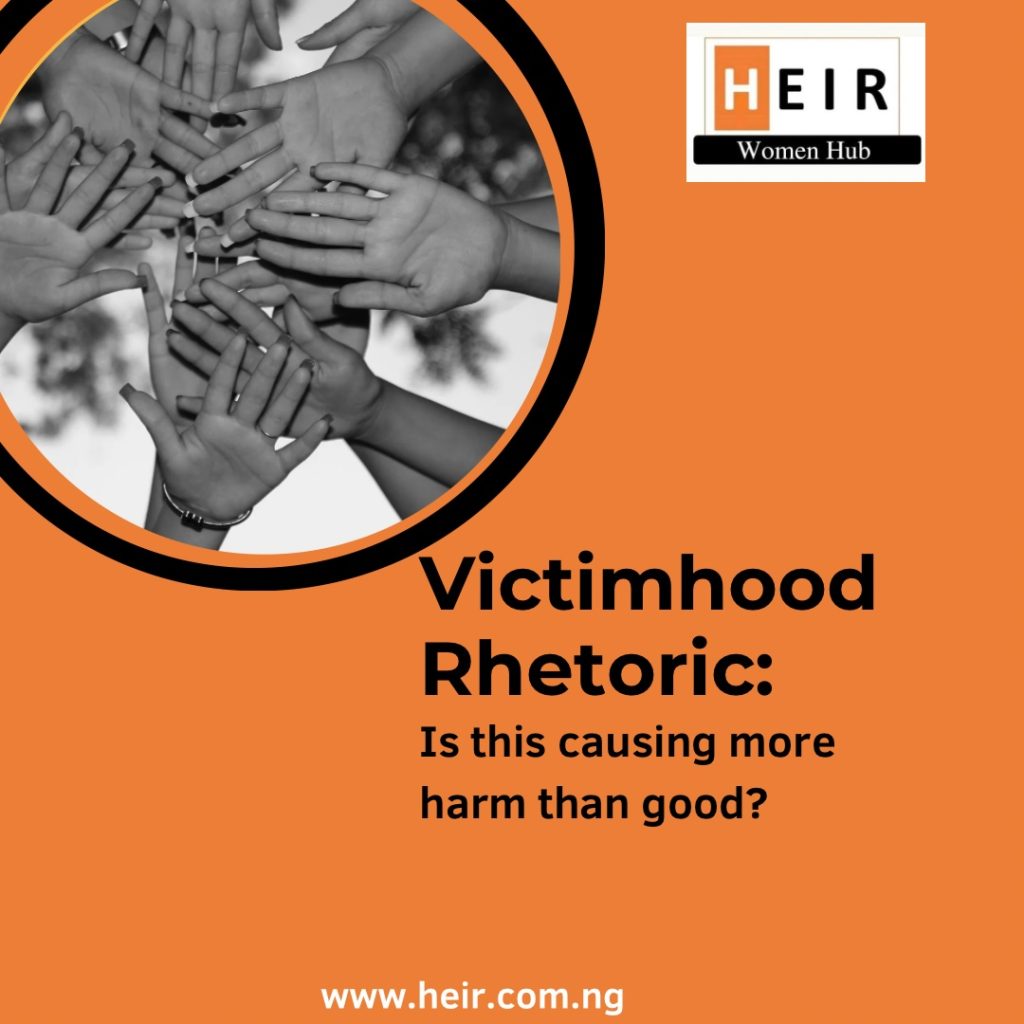
The victimhood rhetoric is imbibed in narratives, themes, discussions, conversations and interventions that further reinforce the “weakness” of bodies that are constructed as helpless. Platforms such as media, schools, religion and tradition further project this concept of victimhood unto bodies that have been conceptualised into a framework supported by law, in order to be governed.
An abuse of a body occurs when there’s an abuse of power. Violence – sexual, domestic, emotional, mental, financial and physical- all occur when one person or group of people deem themselves superior, using power dynamics to cause abuse. Victims are conceptualised as bodies that are inferior and have been manipulated through power and control. Victims are written in as needing saving. This protectionist ideology also shows strongly when the abused body is feminised.
Where did this victim narrative originate from?
In the civilising process of Nigeria, Europeans re-defined bodies that perform certain societal behaviours. Women were conceptualised to be weak, needing protection and inferior to men. Men are to show strength, courage and superiority. History shows that the larger part of western narrative attribute victimhood to women, so women are made to perform norms that align to weakness and powerlessness , unable to posses courage and be lesser humans. Although men are not constructed as “weak” however, recent studies in academia are speaking to the evidence that men go through issues that can also be understood as victimisation. Men and boys get raped, molested, abused and sexually harassed. The question is -when will society de- categorise bodies and victimhood and be inclusive enough to say that men are victims as well as women. This means that men can also be weak, vulnerable, lack strength, need protection and can be powerless.
De-constructing Victimhood
In a previous opinion article, I addressed abuse of minors and reviewed the narrative of instigators of domestic violence. I spoke to the point that suggests a paradox that women who abuse minors in the home are also the perpetrators of such abuse. The power dynamic here as an example, positions such women as violent. The domestic abuse of women by men, dominate the larger conversations and positions women as victims of domestic violence. There is evidence to show this as most common and rightly so. The question is, would women who abuse minors be held accountable for domestic abuse of minors? In this case, are the minors now the victims?
I position that we are all victims of a system and structure that is violent. Men and women can become victims. However the bigger conversation would be that are women comfortable to begin questioning this performance of “weak vessel”? Would or can the defenders of human rights, review the terminology of gender based violence and de-construct the United Nations defined terms to question how these concepts impact our local interventions? As nomenclature is shifting from victim to survivor, one must consider where this re-frame is produced and situated, and for whom?
As I advocate for an inclusive approach to localised “interventions” of domestic violence for women, the framing and terminology produced with it, I also question and in the same vein, ask, does this bring an end to the root cause and prevailing issues that reinforce gender based violence in our communities?
References
Gangoli, Geetanjali and Martin Rew (2011) Mothers-in-law against daughters-in-law: Domestic violence and legal discourses around mother-in-law violence against daughters-in-law in India, Women’s Studies International Forum 34: 420-429.
Kapur, R. (2002) ‘The Tragedy of Victimisation Rhetoric: Resurrecting the Native Subject’, 15, Harvard Human Rights Journal
Zalewski, Marysia et al (eds.) (2018) Sexual violence against men in global politics, Abingdon, Oxon: Routledge.
Añuli Aniebo
